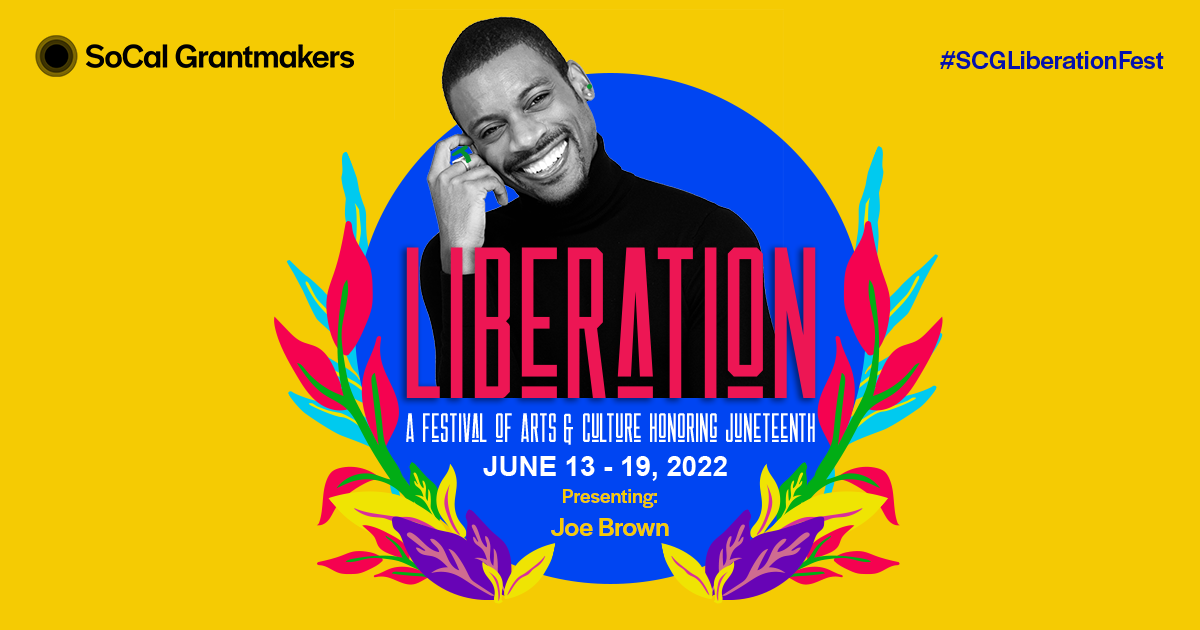Joe Brown
A splashy, time-hopping, genre-blending dedication to Josephine Baker, Lil’ Kim, and all of the fearless, unapologetic Black women that make the world go round!
Watch the Performance
Reflection Questions
- Joe shares his piece as a dedication to all the “fearless, unapologetic Black women that make the world go round.” Today we invite you to honor and reflect on powerful Black women in your life, in your community, in history, and in the movement. We honor Black women, their legacy in movement work, and their ingenuity in all aspects of life. How can you actively continue to elevate the legacy and histories of Black women and femmes? Who are some powerful Black women and femmes you can support, follow, fund, hire, and/or center?
- The song in this piece shares: “no matter what people say, you got it going on!” What are some songs that remind you to be free and embodied? For today's reflection we invite you to make your own playlist that sparks joy and embodiment. Return to it when you need a reminder that this work needs to be embodied and centered in radical joy! Share it with loved ones, co-workers, and community.
About Joe Brown

Joe Brown
Choreographer, Dancer & Educator
@joe_brown101
https://msaagency.com/portfolio/joe-brown/
A choreographer, dancer, and educator from NYC—Joe Brown is known for his powerful, resonating approach to performances, incorporating Stepping and his highly-stylized percussive technique. His keen sense of musicality, geometries, storytelling and rich cultural blends of Stepping, Hip Hop, Dancehall, and African dance have garnered much praise in Hollywood. While he has a full-time career in entertainment, Joe also holds both bachelor and masters’ degrees in engineering and architecture from MIT and SCI-Arc—both which have played a major role in his creations. Joe’s credits include: So You Think You Can Dance, The Masked Dancer, GAP and working with artists such as Lizzo, The Weeknd, Rihanna and Beyoncé (Homecoming).
Interview with Joe Brown
How did you start dance and what drew you to that art form?
I started dancing at a very young age—my family says I could dance before I could walk! I also grew up in a very musical, performance-driven household, where the arts were highly encouraged. My older sister inherently became a role model in dance, teaching and mentoring me at home as she trained for her future career on Broadway.
How do you practice radical joy both in your choreography and in your teaching practice?
I practice radical joy by first reminding myself, and anyone else in my artistic space, rehearsals or class, the first rule is to “have fun!” It is an announcement that always shifts the energy in the room, from one of anxiety and perfectionism to one of learning, growing, and supportive community! I am a firm believer that if you are not enjoying creating/performing then you are doing something wrong.
What messages do you share and hope to express via your movement and choreographic composition?
I hope to inspire and bridge the generations by purposefully cross-hatching concepts, cultures, movement and historical data. This unconventional method of storytelling often shines new light on grounded subject matter, sparks new modes of future thought, and reveals the most unbelievable surprises at their intersections!